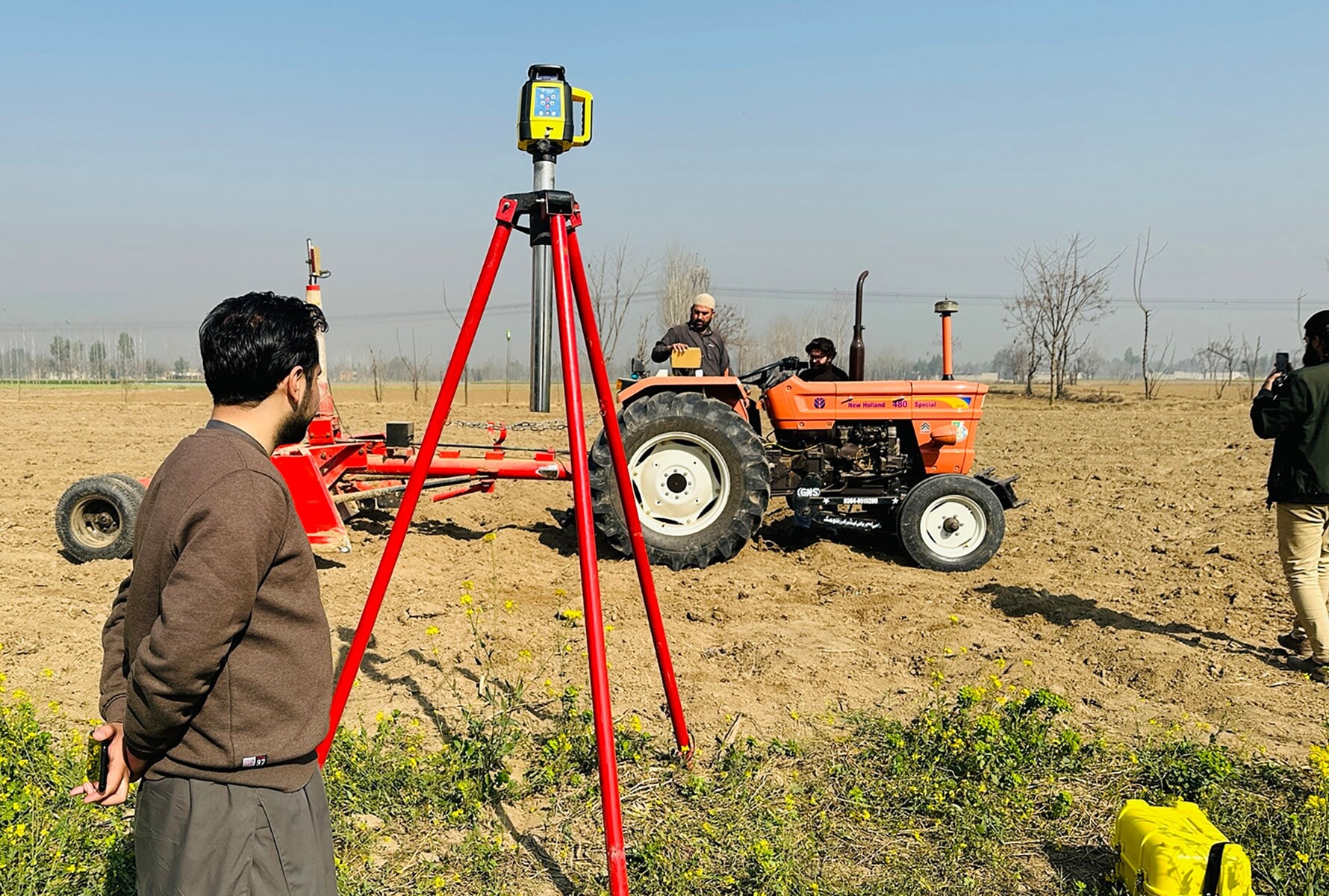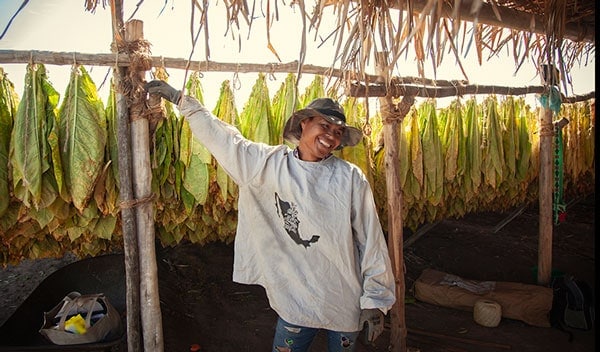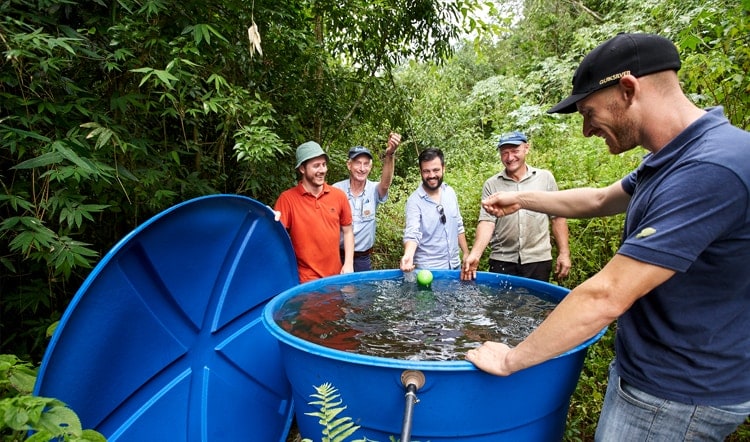Water is a vital life source, so crucial to every aspect of our daily lives.
For Philip Morris International (PMI), water stewardship means reducing water use through efficiency measures, promoting water recycling, protecting watershedsi, preventing water pollution, and promoting sustainable water management in collaboration with relevant stakeholders.ii
PMI aims to build resilience in watersheds, covering its tobacco and other raw materials supply chain and its own operations. To that end, it has developed a goal of optimizingiii 25 million m3 of water by 2033, and Philip Morris Pakistan Limited (PMPKL) is contributing to this with its “Laser Land Leveler” project.

This project uses laser technology to assist traditional land leveling practices. After being trained by the PMPKL Sustainable Agriculture Team, the farmers attach a laser tool to their tractors to help them level their fields in preparation for planting. The tool works by automatically raising and lowering the blade of the grading implement to help level the land to a far greater degree than could have been achieved with the naked eye.
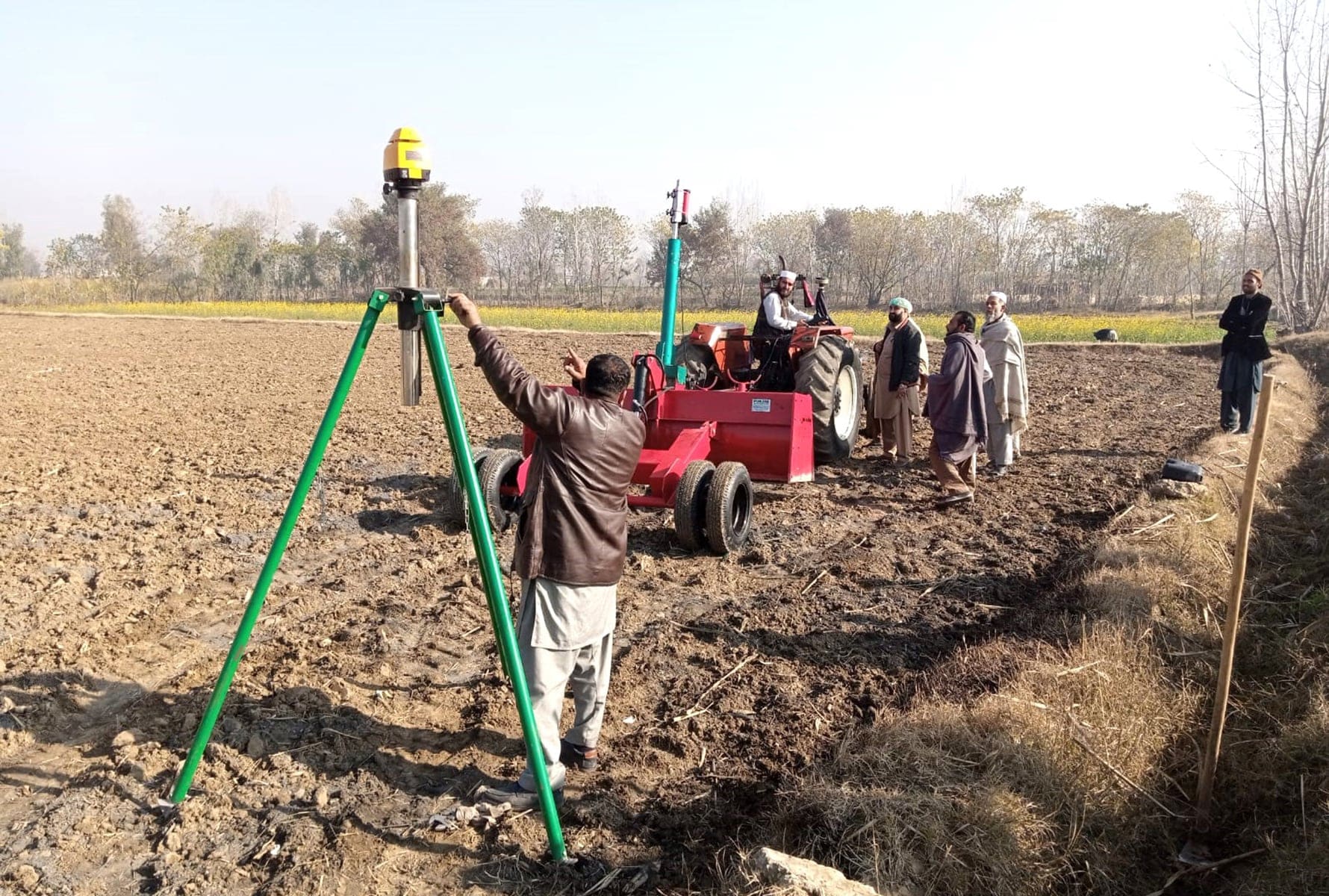
There are several benefits to improved leveling of the land:
- A more uniform distribution of water.
- A more uniform application of fertilizers.
- Improved yield.
- Better soil conservation.
“Reducing water withdrawals and usage to increase water security for PMPKL contracted tobacco farmers and other users sharing the same watershed is the project’s main aim,” said Nasir Ali, Supervisor, Environmental Sustainability, PMI Operations. “However, after looking into the results in relation to water conservation since the project began, we’re very happy to see that this initiative can also help participants save money, increase their incomes, and preserve energy.”
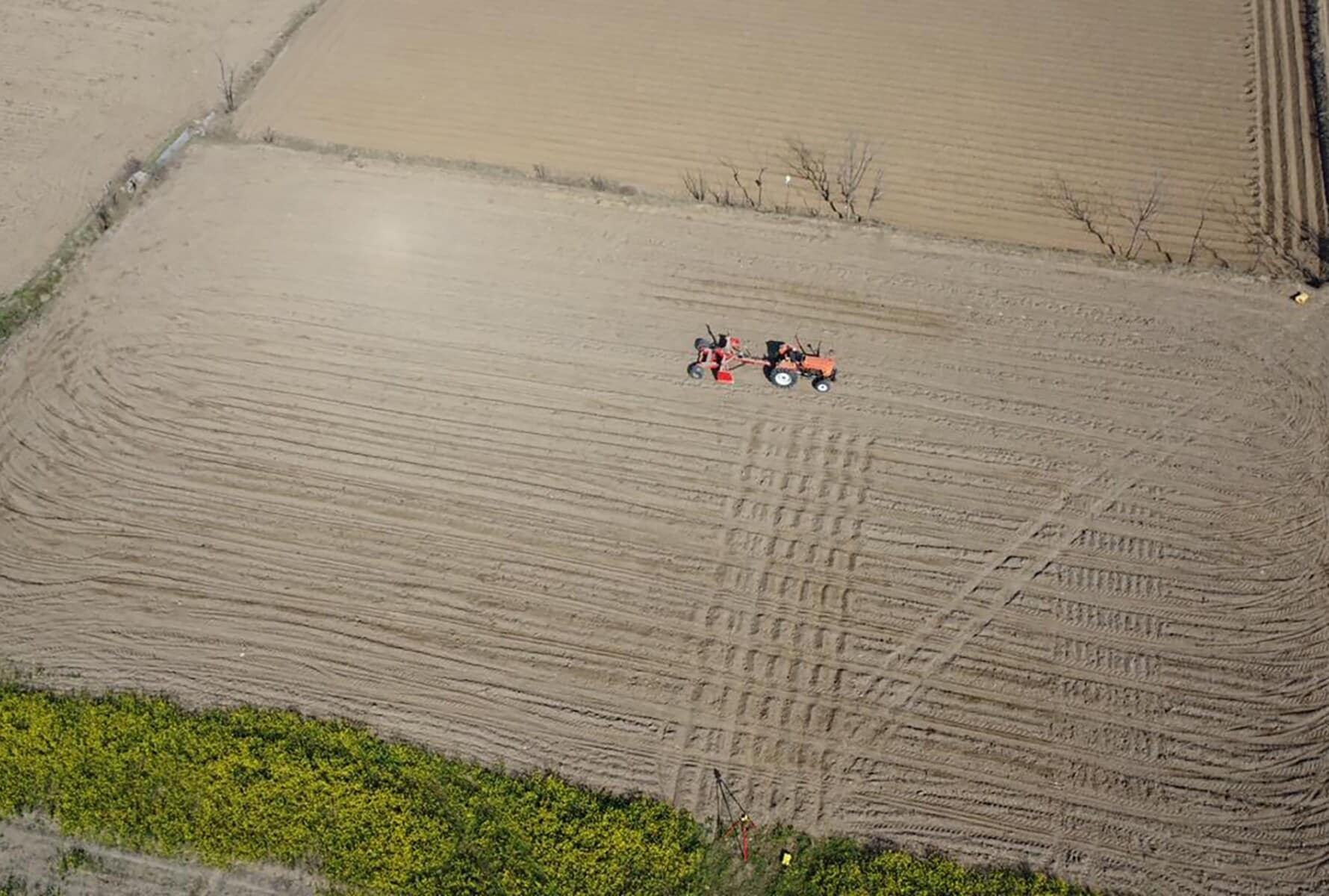
Breaking new ground
The project began in 2022, with just one laser tool. Thanks to the visible benefits of the machinery, the project deployed a further eight machines in 2023 and 2024 across the Mardan, Swabi, and Charsadda regions. The PMPKL Sustainable Agriculture Team carried out extensive training and demo sessions in these regions with local farmers. After seeing the clear benefits of this technology—primarily how it minimized the wastage of water resources and maximized crop yield—word quickly spread through farming communities, with more and more farmers wanting to be a part of the project.
To be considered, farmers must meet the following criteria:
- A high compliance score with Agricultural Labor Practices (ALP).
- A large area of land.
- Farmers must have a tractor to which the laser tool can be attached.
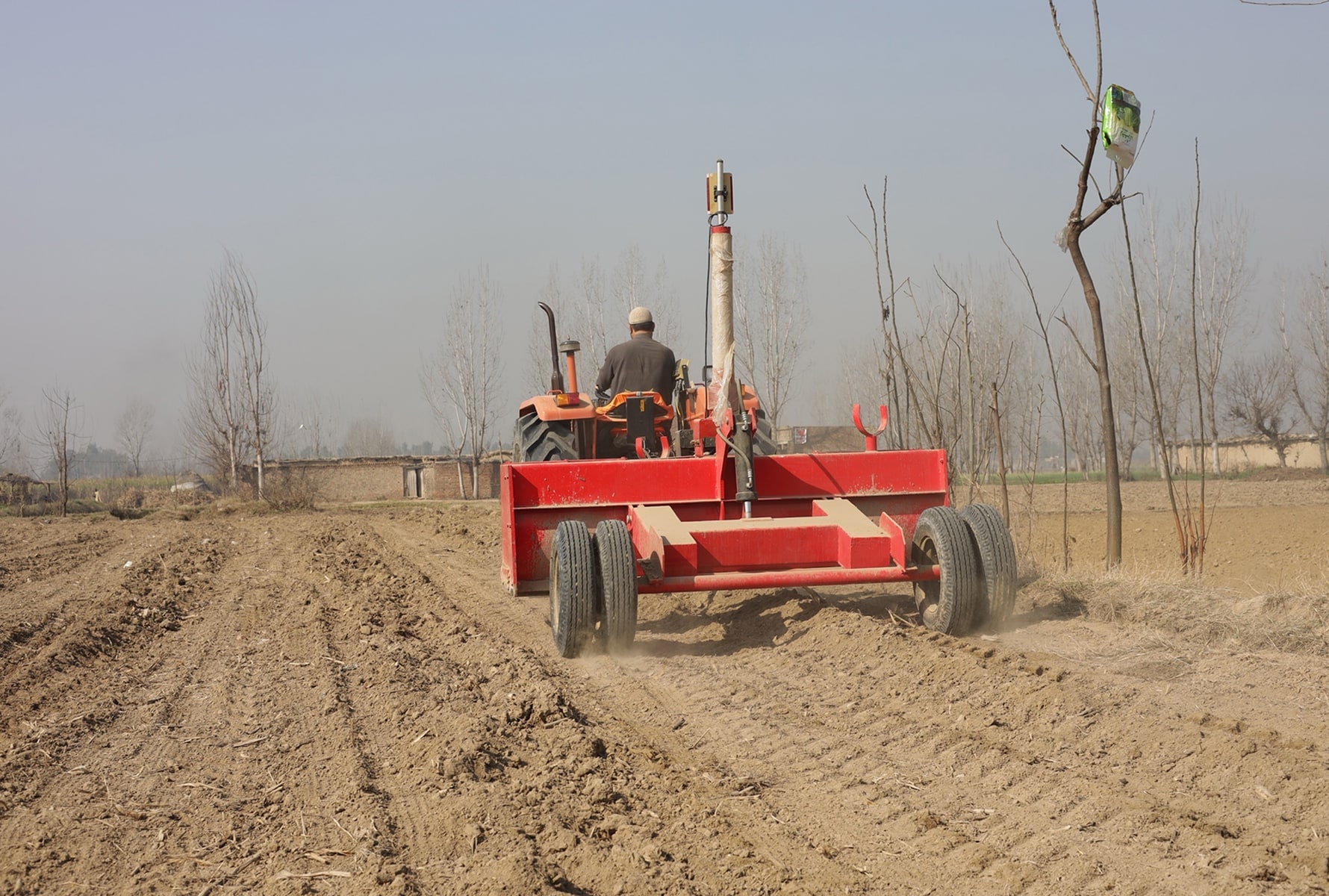
Planting seeds for the future
The PMPKL Sustainable Agriculture Team hopes the project’s popularity will continue to grow, and that the laser tools can continue bringing benefits to both the farmers and the environment. Although nine machines are currently in use, the team hopes to increase this number in the future. Nasir also feels that this technology could be used for a diverse range of crops.
“Looking at the numbers, we can see that farmers may want to use this technology for a diverse range of crops, besides tobacco,” he said.
“Climate-smart agriculture practices and technologies that save on scarce resources such as water and energy, whilst increasing yields and incomes, are more crucial than ever before. With recent studies predicting that demand for irrigation water will increase at least 10 percent with a 1˚C Celsius rise in Asia’s arid and semi-arid regions, the future benefit of the Laser Land Leveler initiative is much more prudent than we think.”
i A watershed is an area of land that drains rainfall and snowmelt into streams and rivers.
ii PMI Water Stewardship Policy
iii A note on what we mean by “optimized.” PMI follows the World Resources Institute’s (WRI’s) volumetric benefit accounting methodology to measure the progress we are making. According to the WRI, Volumetric water benefits are the volumes of water resulting from water stewardship activities that improve the watershed and contribute to the targets under Sustainable Development Goal 6.

